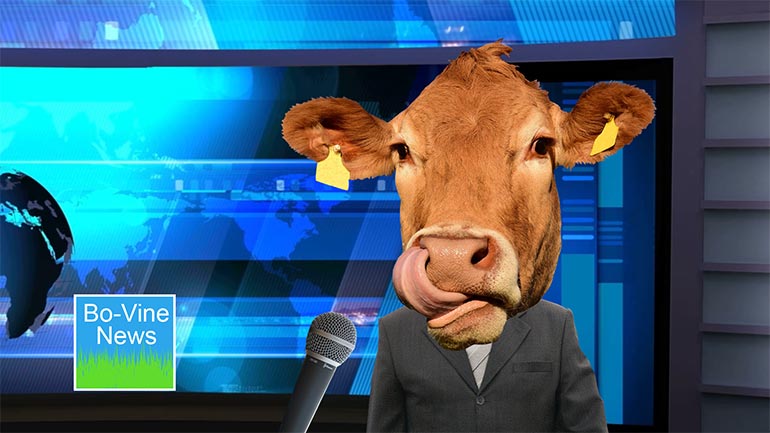ShmoopTube
Where Monty Python meets your 10th grade teacher.
Search Thousands of Shmoop Videos
Terms and Concepts Videos 799 videos
How are risk and reward related? Take more risk, expect more reward. A lottery ticket might be worth a billion dollars, but if the odds are one in...
What is bankruptcy? Deadbeats who can't pay their bills declare bankruptcy. Either they borrowed too much money, or the business fell apart. They t...
What's a dividend? At will, the board of directors can pay a dividend on common stock. Usually, that payout is some percentage less than 100 of ear...
Finance: What is the Difference Between Normal, Inverted and Flat Yield Curves, and What Do They Tell Us? 133 Views
Share It!
Description:
What is the difference between Normal, Inverse/Inverted, and Flat Yield curves and what do they tell us? Normal yield curves represent long-term interest rates being more favorable than short-term rates. Inverted curves represent the opposite, that short-term rates are more favorable. When this happens, usually something pretty drastic is happening in the market like a crash. If the yield curve is flat, rates are about the same. So, this flat period happens between normal and inverted, and is kind of a warning that a recession may be on the horizon.
- Social Studies / Finance
- Finance / Financial Responsibility
- College and Career / Personal Finance
- Life Skills / Personal Finance
- Finance / Finance Definitions
- Life Skills / Finance Definitions
- Finance / Personal Finance
- Courses / Finance Concepts
- Subjects / Finance and Economics
- Finance and Economics / Terms and Concepts
- Terms and Concepts / Accounting
- Terms and Concepts / Banking
- Terms and Concepts / Bonds
- Terms and Concepts / Credit
- Terms and Concepts / Econ
- Terms and Concepts / Ethics/Morals
- Terms and Concepts / Financial Theory
- Terms and Concepts / Metrics
- Terms and Concepts / Muni Bonds
- Terms and Concepts / Regulations
Transcript
- 00:00
Finance, a la Shmoop. [title page]
- 00:03
What's the difference between normal, inverted, and flat yield curves, and what to they tell
- 00:09
us?
- 00:10
All right, well let's start with the basics.
- 00:13
Yield curve... ooh, sexy term. [guy talks about yield curves]
Full Transcript
- 00:15
Say it a lot and people will think you know a lot about finance.... or that you're really [people are pretty impressed]
- 00:19
into slowing down while making gradual left turns. [pig thanks slow driver]
- 00:22
But in finance, a yield curve is just a graphic representation of bond yields, from "maturing [yield curves defined]
- 00:29
soon" to "not maturing for a really long time."
- 00:32
So here's a yield curve. [yield curve illustrated]
- 00:34
Note that the ticks on the bottom are time and, on the left--the vertical y-axis there--it's
- 00:39
percentage, or yield.
- 00:41
Well, this particular curve slopes oh-so-gently upward. [upward slope demonstrated]
- 00:44
You can see that bonds maturing in three months yield 2% and bonds maturing in 30 years yield
- 00:51
4.5%.
- 00:52
What does this say?
- 00:53
Well, it says that the debt markets believe that interest rates will be meaningfully higher [diagram explained]
- 00:58
in the future--like, more than double--and that, to some extent, there's risk in getting
- 01:02
those bonds paid off.
- 01:04
That is, money tangibly ready to be paid off in the next two months carries a lot less
- 01:08
investment risk than bonds three decades away. [roaches discuss bills]
- 01:11
Yeah, you never know, we could have this... [roaches watch nuclear destruction of world]
- 01:15
So this is a normal curve: Money near term yields less than money due far away.
- 01:19
Well, most of the time, this is how yield curves look.
- 01:22
But think about an era where the government is desperately fighting inflation and it raises [government fights inflation]
- 01:27
short-term borrowing rates massively. [rates increase]
- 01:30
Well this, in fact, happened in the 1970s when Vietnam's war economy, coupled with a [Vietnam War footage]
- 01:35
bunch of other elements, produced roaring inflation in the U.S.
- 01:38
So the Fed then raised short-term rates into the double digit zone, but most investors [rates increase]
- 01:44
believed that these very expensive short-term interest rates would stop people from borrowing
- 01:50
and buying stuff.
- 01:51
Think about your credit card charging you 25% a year in interest. [big credit card bill]
- 01:55
Ugh, that's a lot.
- 01:57
It'll make you think twice about putting that belly button ring set you saw at the mall
- 02:02
on your AmEx. [person doesn't buy belly button ring]
- 02:03
So when people stopped buying things on credit, well, they bought a lot less and the economy [tumbleweed in mall]
- 02:08
cooled, and then the Fed went ahead and lowered rates and the yield curve went back to normal. [rates decrease]
- 02:14
But for a while, the curve was inverted. [inverted curve demonstrated]
- 02:18
That is, is started with short-term rates very high, and then long-term rates were cheaper.
- 02:24
And as you might be able to guess, somewhere in the middle there, as the curves crossed
- 02:28
over, there was a short period where the yield curve was pretty flat. [flat yield curve demonstrated]
- 02:32
That is, the price of renting money is the same whether you're borrowing it for three
- 02:37
months or 30 years.
- 02:38
You know, that same 3.5% kind of rent.
- 02:40
Got it?
- 02:41
So now you've got curves, and you know how to use 'em. [pig admires curves]
Related Videos
GED Social Studies 1.1 Civics and Government
What is bankruptcy? Deadbeats who can't pay their bills declare bankruptcy. Either they borrowed too much money, or the business fell apart. They t...
What's a dividend? At will, the board of directors can pay a dividend on common stock. Usually, that payout is some percentage less than 100 of ear...
How are risk and reward related? Take more risk, expect more reward. A lottery ticket might be worth a billion dollars, but if the odds are one in...





































































































